Twitter (now X) never ceases to amaze with the variety of information it delivers. One day, I came across a post about an exhibition showcasing bones, held at the University Collaboration Office of the Bunkyo Ward Education Center from May 10 to September 30, 2024.
The accompanying images stirred my fascination with bones, and realizing the exhibition’s end was near, I rearranged my schedule for a last-minute visit to the “Animal Perspectives” exhibition.
Greeted by Skeleton Specimens: Oh, the Beauty of Bones!
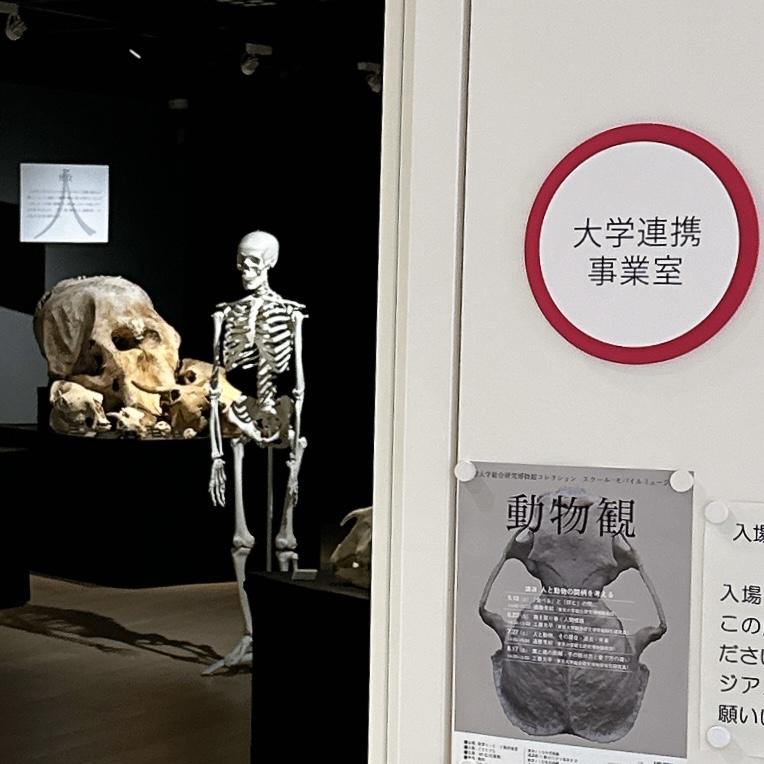
The centerpiece of the exhibition room is a human skeleton model. As expected of a replica, its pristine whiteness and symmetry are striking.
Even though I know this beauty stems from its artificial nature, I couldn’t help but admire it, almost transfixed. Usually, I’d start an exhibition by reading the introductory panels, but this time, I found myself drawn to the skeleton, standing in awe of its beauty.
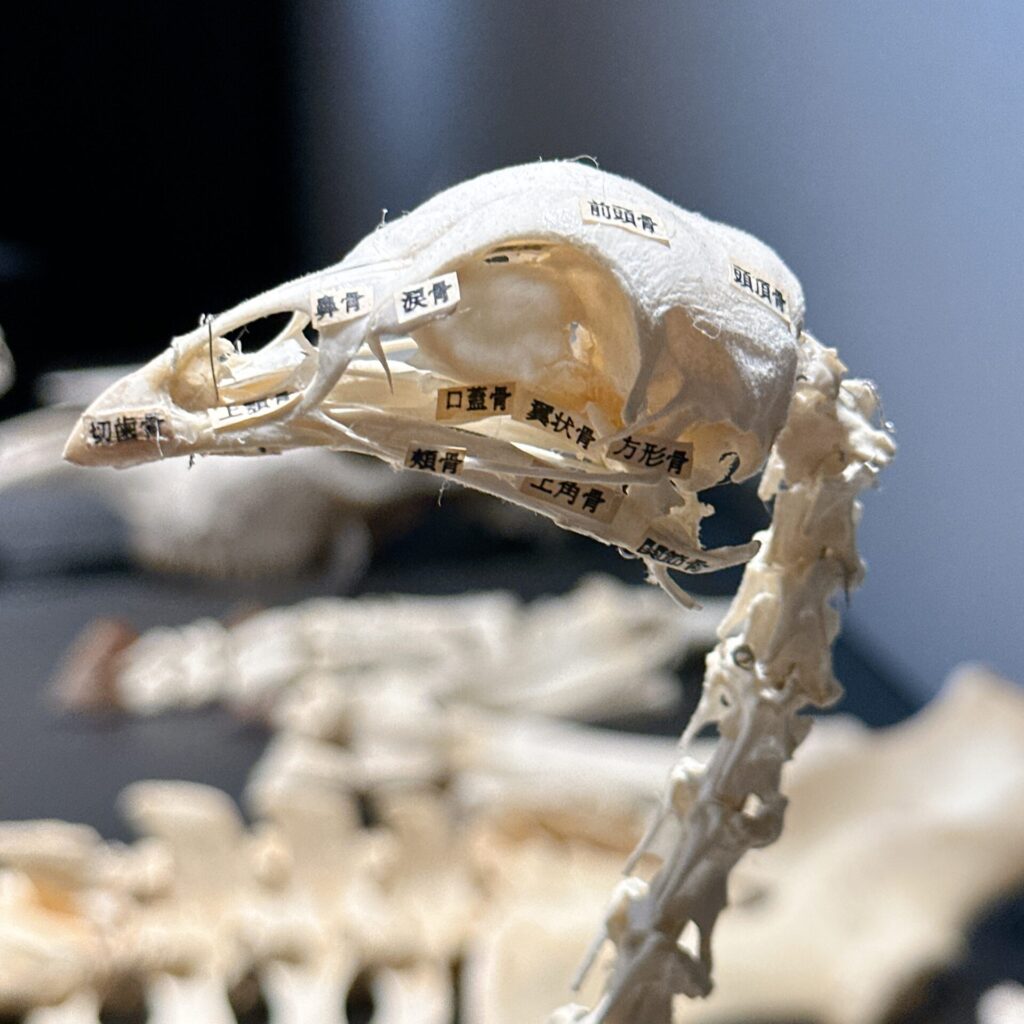
ining the walls, animal bones are displayed in sections, forming a circular path. From animals we encounter as food, to those we see in zoos or aquariums, and even those we consider family members, all share the same life-sustaining frame: bones.
Eight Sections Highlighting Deep, Indivisible Connections
The exhibition is divided into eight themes: “Food,” “Companionship,” “Hunting,” “Domestication,” “Labor,” “Faith,” “Stories,” and “Conservation.”
It’s easy to imagine how animals enrich human lives emotionally, especially for pet owners and caretakers. But beyond companionship and spiritual connections, animals also provide physical support through labor or serve as food, playing a crucial role in human existence.
Animals, humans, enrichment, love, faith, sustenance—this exhibition allows visitors to contemplate their connections with animals in their purest, simplest form. It offers a serene and reflective experience.
Outlines Revealed Through Bone Structures
In the “Food” section, bones of animals commonly consumed as food are displayed.
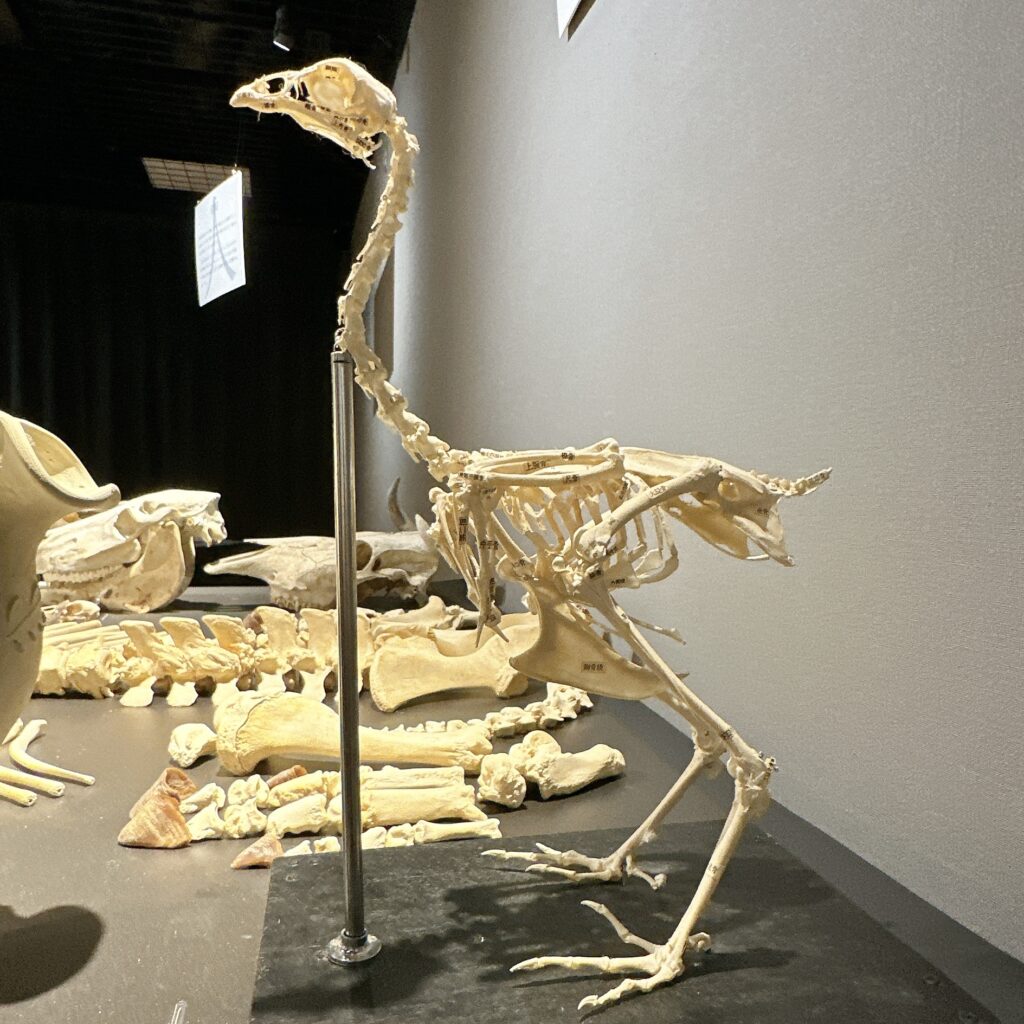
Looking at a chicken skeleton, can you imagine which part might correspond to the fried chicken you’ve eaten? You might find yourself thinking, “Ah, this cartilage-like bone must be that part,” or “Those thin bones are likely from here.” Such observations might even change how you view your choices.
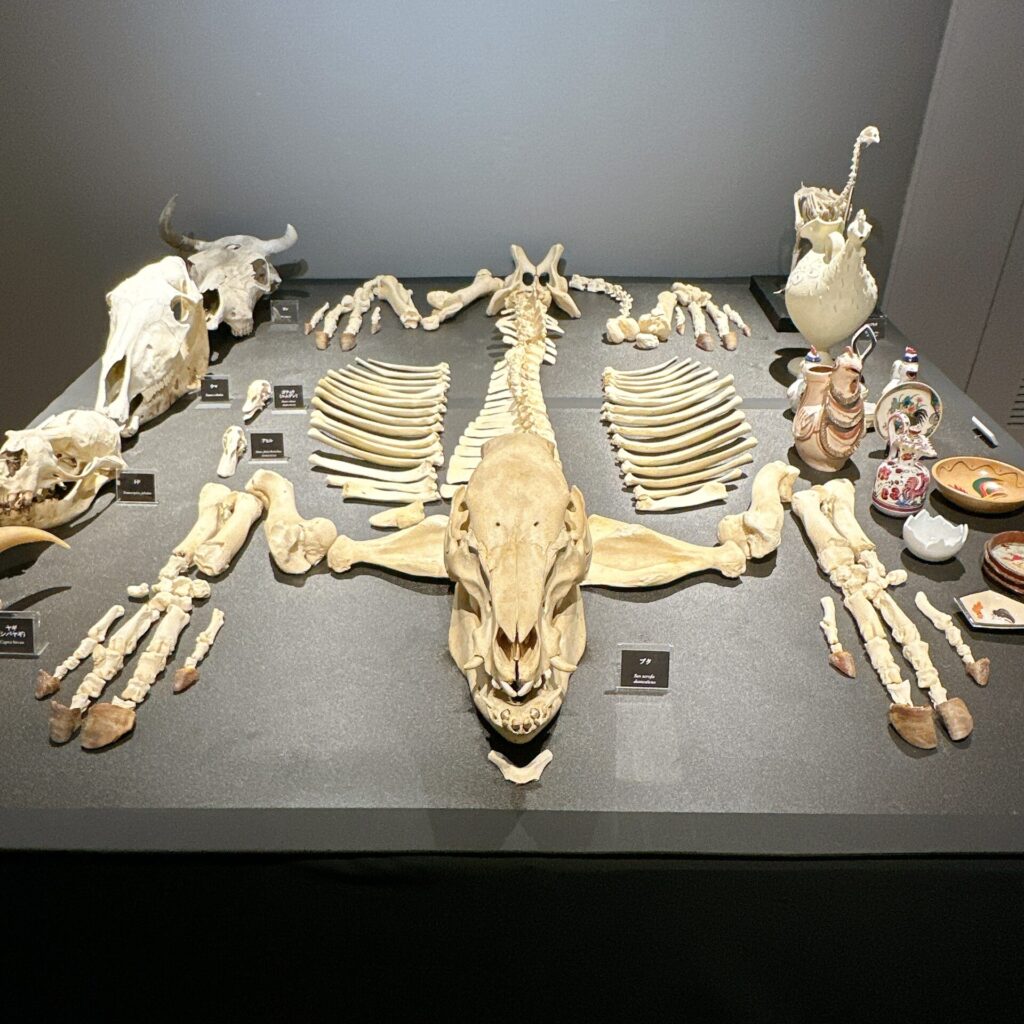
A full-body pig skeleton, displayed in its natural configuration, is unexpectedly imposing—so large!
Still, thoughts of dishes like pork feet and spare ribs crossed my mind, reminding me how lives sustain us. This isn’t just the musings of a foodie!
Seeing the pig skeleton, I wondered: where exactly are pork feet cut? How many toes are served per portion?
Considering the Roles Beyond the Bones
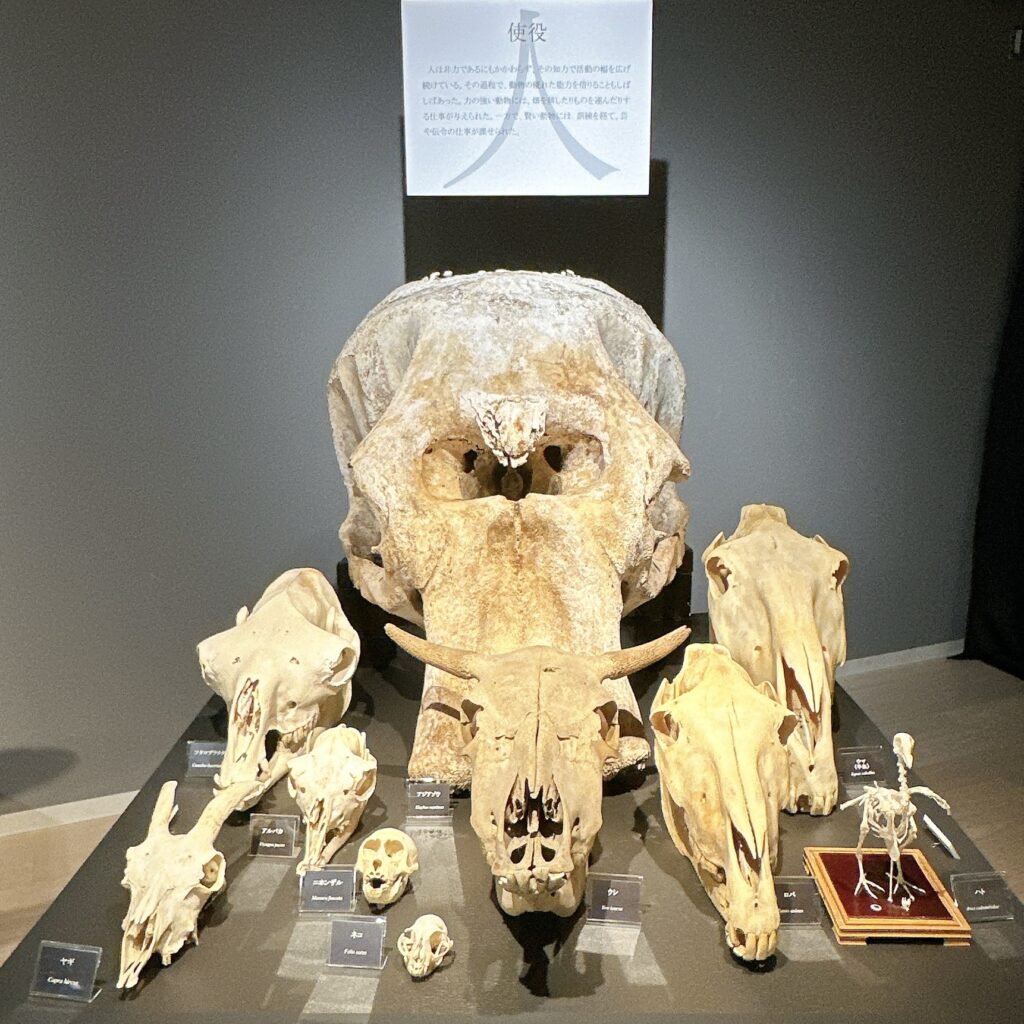
When we think of animals serving humans, large and strong creatures often come to mind for tasks like transportation or agriculture. But animals have also played intellectual roles.
Carrier pigeons, for example, utilized their homing instincts for communication. Similarly, herding dogs serve as messengers for humans.
And cats? Though untrained, they have historically helped control pests like mice. Cats even boarded ships in the past, not just to protect grain but also to prevent rats from gnawing holes in the wooden hulls.
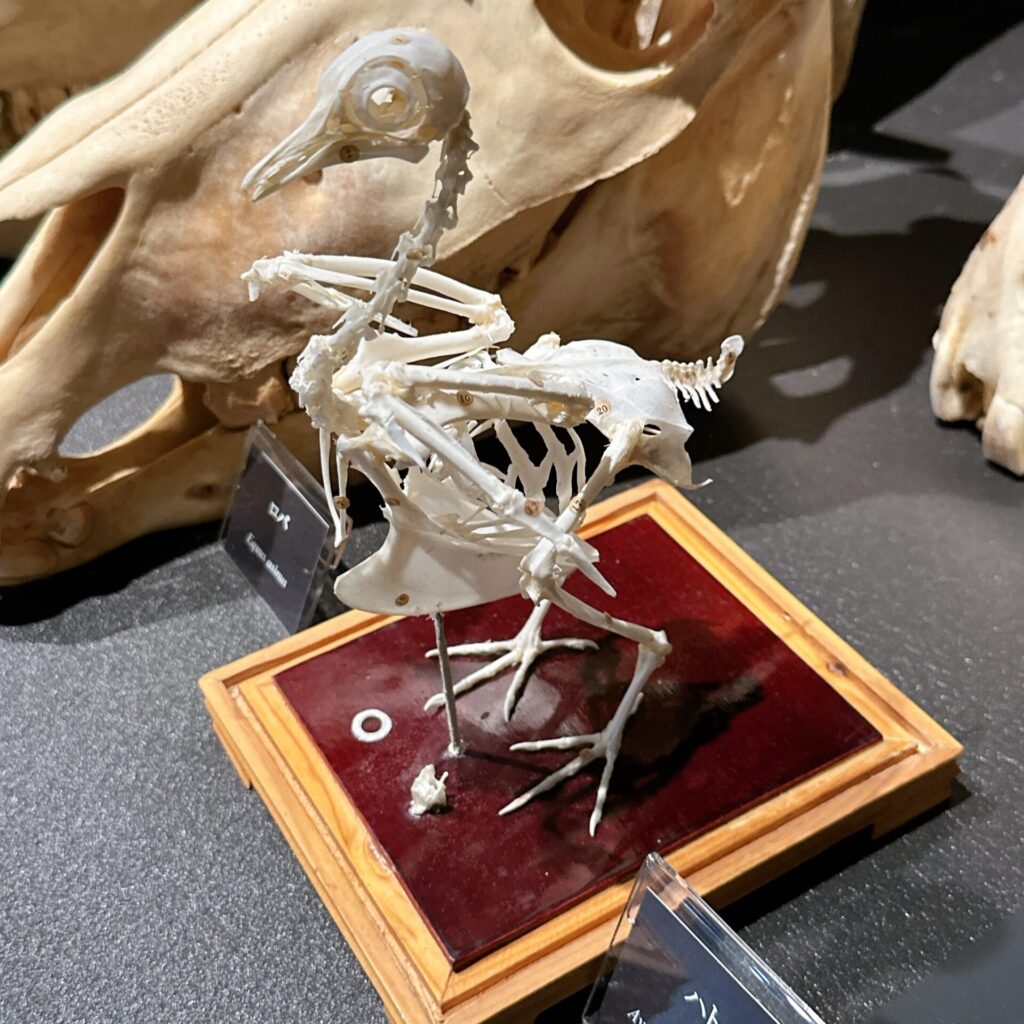
Bird skeletons, including pigeons and chickens, have an unexpectedly delicate charm. Perhaps this is why their forms are often seen in steampunk-inspired art. Their skeletons are not only fascinating but irresistibly cute.
Simply Beautiful: Organic, Unique, and Asymmetrically Perfect
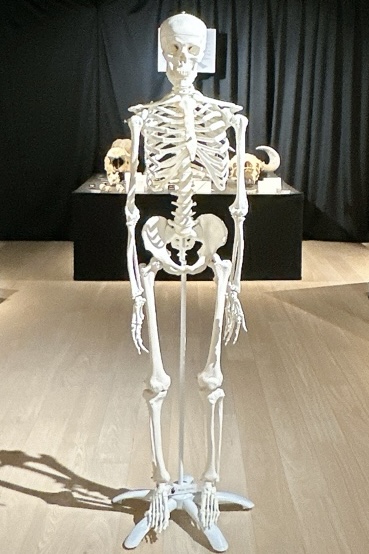
Standing with perfect alignment, the figure seems to meet your gaze, creating a curious sense of confrontation, even without eyes.
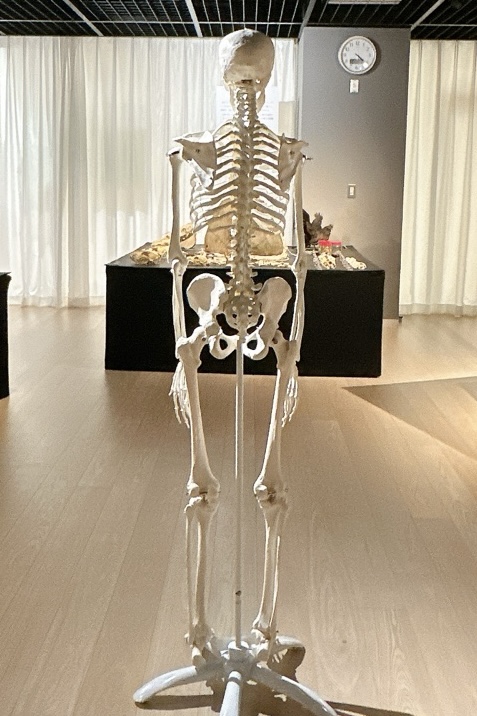
Since my teenage years, I’ve been captivated by bones—so much so that I once seriously considered buying a skeleton model. But why do I love them so much?
During my one-hour visit, I reflected on this question. Perhaps it’s their imperfect asymmetry, their shared basic structure across species yet unique designs, or their ultimate simplicity stripped of all excess.
Visit “Animal Perspectives” at the Bunkyo Ward Education Center Until September 30, 2024
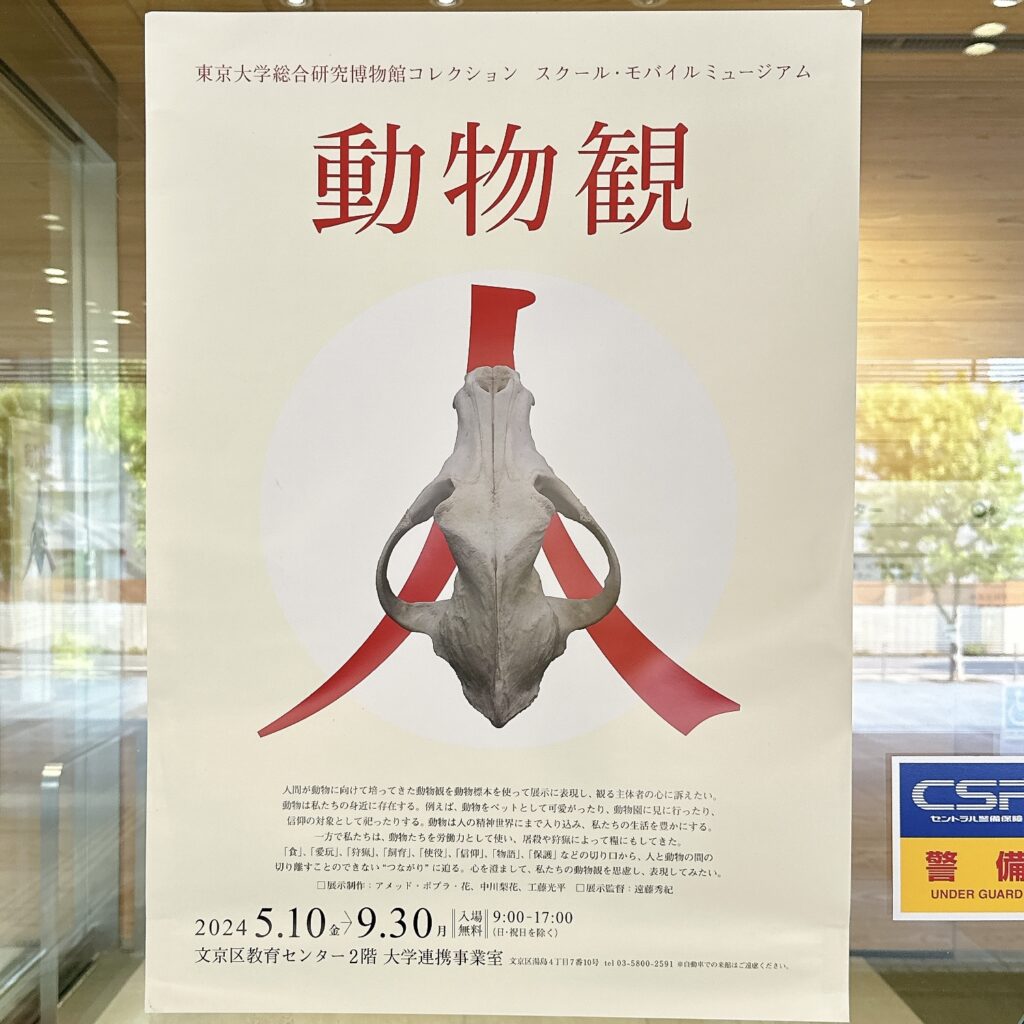
“Animal Perspectives” is held on the second floor of the Bunkyo Ward Education Center at the University Collaboration Office. Though it’s about a 10-minute walk from the nearest station, the quiet, picturesque streets make the walk pleasant.
Even as someone who considers themselves a “pro at getting lost,” I managed to arrive safely with the help of a map.
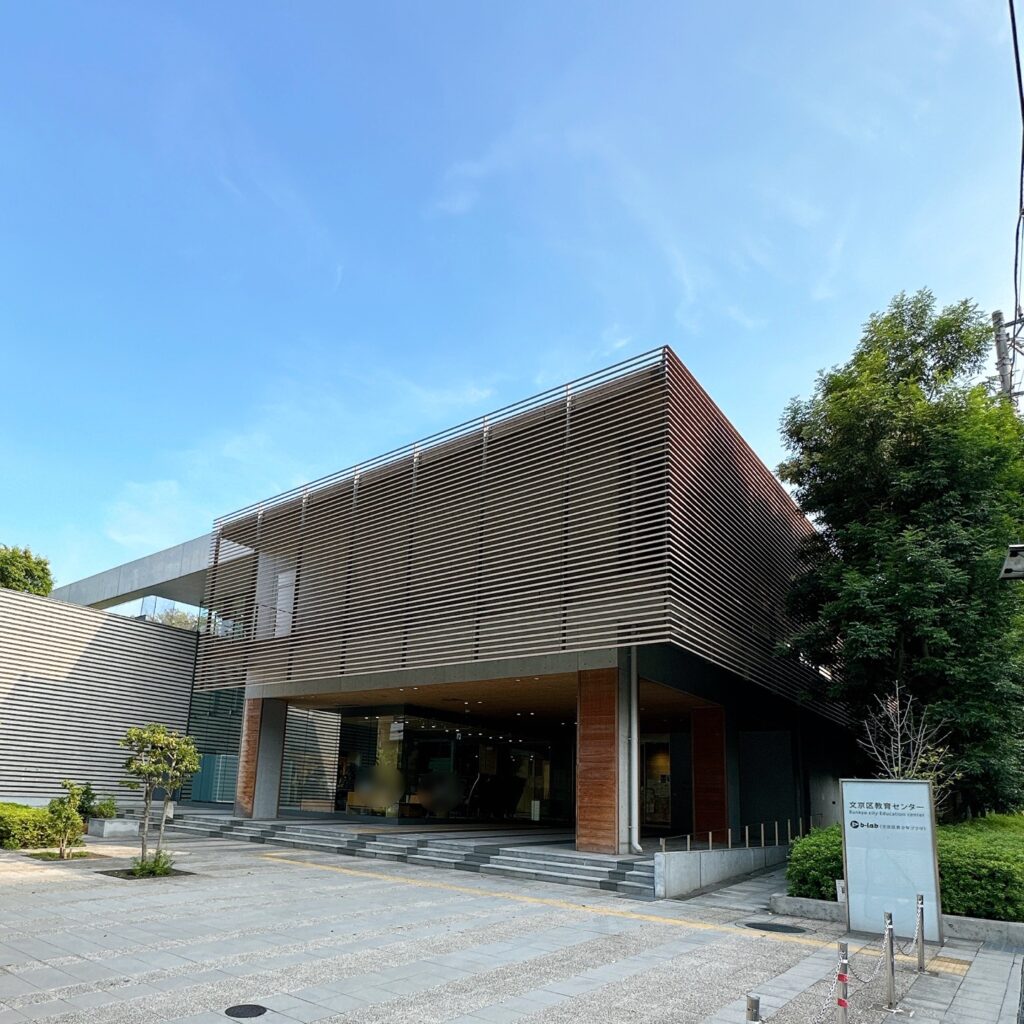
This exhibition invites you to reflect on the animals we unconsciously encounter daily—those that soothe us, feed us, and more. By examining their simplest forms, their bones, we can deepen our awareness of our quiet yet profound connections with animals.
Bunkyo Ward Education Center
Source: Official Website of Bunkyo Ward Education Center
Address: 4-7-10 Yushima, Bunkyo Ward, Tokyo 113-0034
8-minute walk from Tokyo Metro Chiyoda Line “Yushima” Station (Exit 1)
10-minute walk from Tokyo Metro Marunouchi Line “Hongo-sanchome” Station (Exit 2)
8-minute walk from Toei Oedo Line “Hongo-sanchome” Station (Exit 5) and other
『Exhibition Details』
Exhibition Period: Friday, May 10, 2024, to Monday, September 30, 2024
Closed: Sundays and public holidays
Hours: 9:00 AM to 5:00 PM
Admission: Free
Venue: University Collaboration Office, 2nd Floor, Bunkyo Ward Education Center
※Please note that exhibition dates and times may change depending on circumstances.
